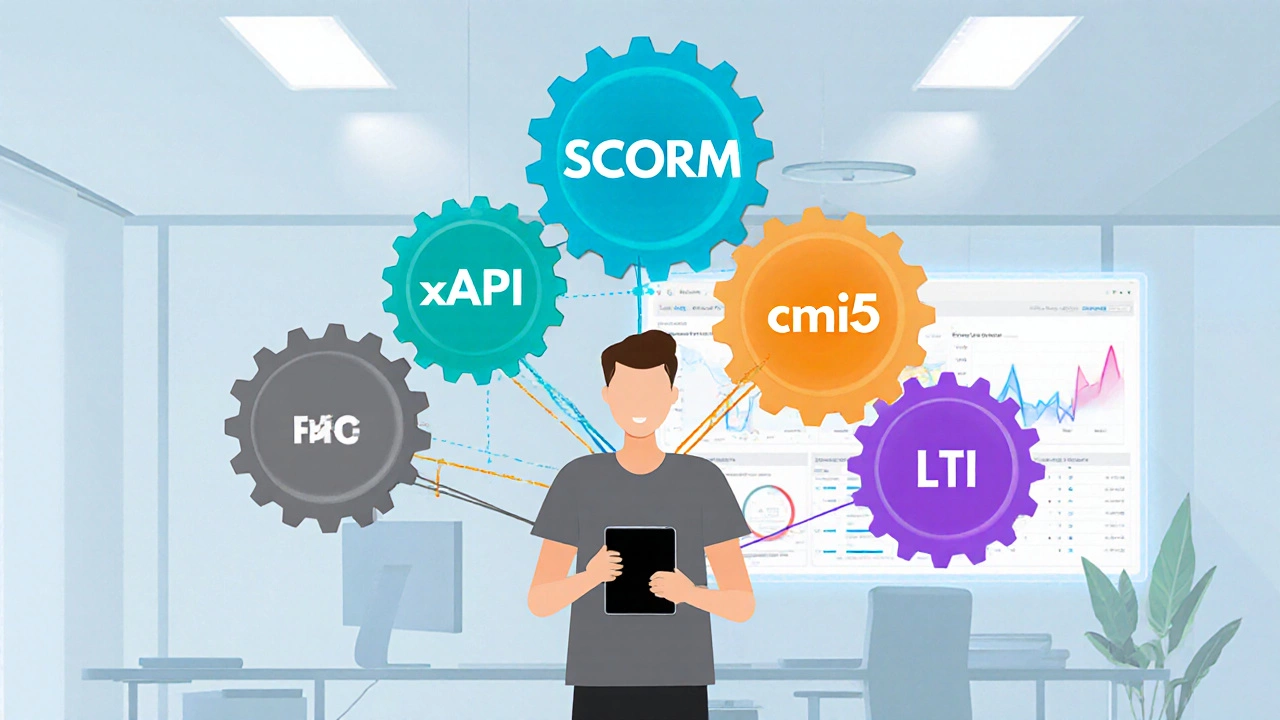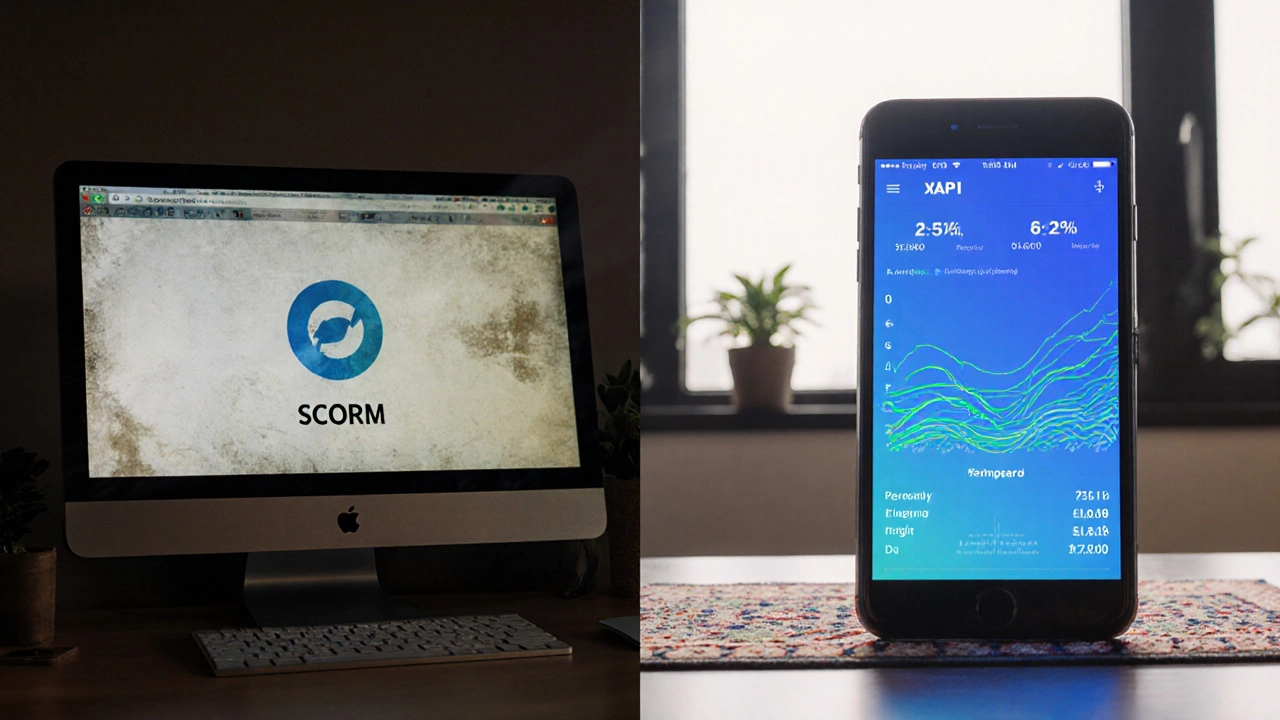Quick Takeaways
- SCORM is aging; modern standards like SCORM alternatives offer better mobile, analytics, and offline support.
- Experience API (xAPI) captures granular learning activity across devices.
- cmi5 combines the best of SCORM’s structure with xAPI’s flexibility.
- LTI focuses on seamless tool integration rather than content packaging.
- Choosing the right replacement depends on your LMS, reporting needs, and learner experience goals.
What Is SCORM and Why Is It Losing Ground?
SCORM is a set of technical specifications that allows e‑learning content to be packaged, launched, and tracked inside a Learning Management System (LMS). Developed in the early 2000s by the Advanced Distributed Learning (ADL) initiative, SCORM tells an LMS when a learner starts a module, how long they spend, and whether they passed the assessment. While SCORM was revolutionary for its time, it assumes a web‑browser environment, static content, and a one‑size‑fits‑all data model. Modern learners expect mobile‑first experiences, offline access, and rich analytics-capabilities SCORM struggles to deliver.
For many organizations, SCORM still works for simple compliance courses, but developers and instructional designers increasingly hit roadblocks: no support for gamified interactions, limited data points beyond completion status, and cumbersome version upgrades. That’s why the industry is gravitating toward newer standards that address these gaps.
Experience API (xAPI) - The Data‑Heavy Contender
Experience API (often called xAPI or Tin Can API) was released in 2013 to capture learning experiences wherever they happen-websites, mobile apps, VR simulations, or even real‑world activities. xAPI records statements in the form "actor verb object" and stores them in a Learning Record Store (LRS). This flexible data model lets you track micro‑interactions like video pauses, click‑throughs, or sensor data from a wearable.
Key benefits of xAPI include:
- Device‑agnostic - works on smartphones, tablets, laptops, and IoT devices.
- Offline capability - statements are cached locally and synced when connectivity returns.
- Rich analytics - you can query the LRS for detailed learning pathways and behavior patterns.
cmi5 - The Hybrid That Marries Structure with Flexibility
cmi5 is a specification that blends SCORM’s launch‑and‑track approach with xAPI’s data model. It was published by the ADL Initiative in 2019 to address SCORM’s shortcomings while preserving familiar LMS workflows. cmi5 defines a "course" as a collection of xAPI activities, but it adds a launch URL and a registration process that many LMSs already understand. This makes migration smoother for organizations that have heavy SCORM investments.
cmi5 shines when you need:
- Formal course structures (modules, prerequisites) that map to compliance tracking.
- Detailed learning data captured through xAPI statements.
- Consistent reporting across different delivery modes (web, mobile, VR).
LTI - The Integration‑First Standard
Learning Tools Interoperability (LTI) is a standard created by IMS Global Learning Consortium that focuses on launching external tools from within an LMS. Unlike SCORM, which packages content, LTI simply passes a secure launch request (often with a JWT) to a third‑party tool and receives back a grade or other outcome. This makes it ideal for SaaS learning apps, assessment engines, or adaptive learning platforms.
Advantages of LTI include:
- Seamless single sign‑on (SSO) between LMS and external tools.
- Real‑time data exchange - grades, feedback, and user data are posted instantly.
- Version 1.3 adds OAuth 2.0 and OpenID Connect for stronger security.
Other Niche Standards and Supporting Technologies
While xAPI, cmi5, and LTI dominate the conversation, a few older or niche specs still appear in certain sectors:
- AICC - an airline‑industry legacy format that some legacy LMSs still support.
- HTML5 - not a learning spec, but its native multimedia capabilities often replace SCORM wrappers for simple courses.
- Learning Record Store (LRS) - the back‑end repository for xAPI statements; many vendors offer hosted LRS solutions.
Side‑by‑Side Comparison
| Feature | SCORM | xAPI (Tin Can) | cmi5 | LTI |
|---|---|---|---|---|
| Launch method | Manifest‑based package | API call from any app | Manifest + launch URL | Secure launch URL (JWT) |
| Data model | Simple completion/score | Verb‑object statements | xAPI statements within course structure | Grade pass‑back, custom params |
| Offline support | No | Yes (cached statements) | Yes (via xAPI) | No (real‑time launch) |
| Mobile friendliness | Limited | Built‑in | Built‑in | Depends on tool |
| Primary use case | Compliance courses | Performance tracking, gamification | Hybrid compliance + analytics | Tool integration, assessments |
How to Choose the Right Replacement for Your Organization
Pick a standard based on three practical questions:
- What’s the learning experience? If you’re delivering simple slide‑based modules, SCORM may still suffice. For interactive simulations or mobile games, xAPI or cmi5 are better fits.
- How do you need to report? Need just pass/fail? SCORM works. Want detailed dashboards showing every click? Go with xAPI and an LRS.
- What’s your tech stack? Does your LMS support cmi5 out of the box? Many modern LMSs (e.g., Canvas, Moodle 4+) do. If you rely heavily on third‑party tools, LTI will give the smoothest integration.
In practice, many organizations adopt a blended approach: legacy SCORM for compliance, xAPI for analytics‑heavy modules, and LTI for SaaS tools. This hybrid strategy lets you leverage existing investments while future‑proofing new content.

Implementation Tips and Common Pitfalls
Start with a pilot. Choose a single course, convert it to the new standard, and measure impact on completion rates, data quality, and learner feedback.
Watch out for these traps:
- Skipping the LRS. If you adopt xAPI but store statements in a flat file, you lose the power of query‑based analytics.
- Ignoring security. LTI 1.3’s OAuth 2.0 is mandatory for protecting user data; older LTI versions are vulnerable.
- Over‑engineering. Not every course needs granular data; too many statements can bloat your LRS and increase costs.
Keep documentation tight: maintain a mapping sheet that links SCORM SCOs to their xAPI equivalents, and version your launch manifests to avoid LMS cache issues.
Future Outlook - Will One Standard Win?
The industry isn’t likely to crown a single winner soon. SCORM’s simplicity still appeals to regulators, while xAPI’s richness fuels adaptive learning AI. cmi5 tries to bridge the gap, and LTI continues to dominate tool integration.
What’s certain is that the next generation of LMSs will be built to speak all of these standards interchangeably. As a content creator, your best bet is to become fluent in the data model (xAPI statements) and the launch mechanisms (cmi5 or LTI). That way, you can repurpose the same learning experience across any platform.
Next Steps
- Audit your current SCORM inventory. Identify high‑value courses that would benefit from richer data.
- Select an LRS provider (e.g., Learning Locker, Watershed) and set up a sandbox.
- Convert a pilot module to xAPI or cmi5 using authoring tools like Articulate Rise 360, iSpring, or Elucidat.
- Test integration with your LMS’s LTI consumer if you plan to launch external tools.
- Measure key metrics (completion, engagement, data granularity) and decide whether to migrate more content.
Frequently Asked Questions
Is SCORM dead?
No. SCORM still powers many compliance courses, but its limitations push new projects toward xAPI, cmi5, or LTI.
Can I use xAPI without an LRS?
Technically you can store statements elsewhere, but an LRS provides the querying, reporting, and standard compliance that make xAPI valuable.
What’s the biggest advantage of cmi5 over SCORM?
cmi5 retains SCORM’s familiar launch flow while unlocking xAPI’s detailed data model, giving you both structure and flexibility.
Do I need LTI if I already use xAPI?
Only if you want to embed third‑party tools that require secure, real‑time launches. xAPI handles data tracking; LTI handles tool integration.
How do I choose an LRS?
Look for scalability, API support, GDPR compliance, and built‑in analytics dashboards. Popular choices include Learning Locker, Watershed, and YetAnotherLRS.






Write a comment: